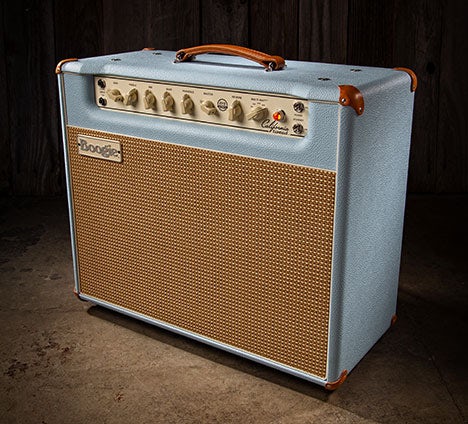Amplitudes: The Mesa Boogie Blog
Tones And Tips
MESA® Tube Color Codes by Randall Smith
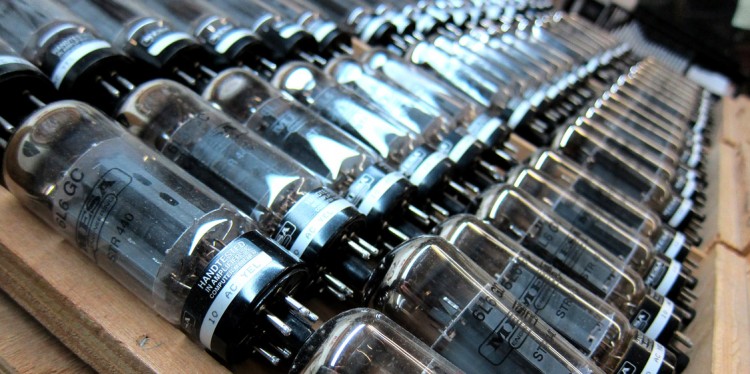
MESA/Boogie® Tube Color Codes explained by Randall Smith
FAQ: “What’s up with the color coding of your power tubes?”
Most of you have heard about the importance of matching tubes to get the best performance from an amplifier. That’s because most amps use pairs of output tubes running PUSH-PULL for greater power efficiency---splitting the signal into positive and negative halves to be recombined in the output transformer before hitting the speaker.
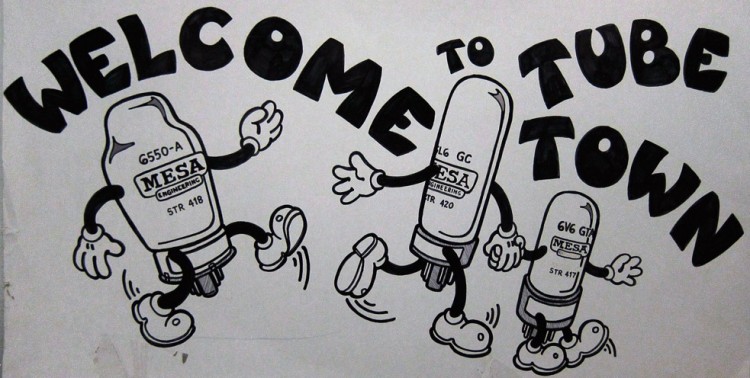
The positive voltages are amplified (or pushed) by one tube while the negatives are “pulled” by the other tube. If one tube amplifies more than the other, the result will be lopsided when they’re recombined. Picture the tires on a car: If one side is bigger than the other, chassis geometry is distorted and the car won’t track straight.
Amplifiers with four or more power tubes still run push-pull with their extra power coming from the additional tubes working in PARALLEL on each side.
How accurately should tubes be matched? Industry standard is plus-or-minus ten-percent. That means two tubes could be as far apart as 20% and still considered matched.
Our matching process at MESA is twice as stringent at plus-or-minus 5% before a tube moves into our next color category and is matched with another nearly identical one.

More important is that ALL our color categories are within the “sweet spot” of tube performance. We simply reject all the tubes that test either under scale or over scale.
Such strict selection and close tolerance allows us to permanently set the bias in each amplifier so it never needs re-adjustment. Many other amplifiers use adjustable bias or balance controls to compensate for over- and under scale tubes or to help equalize the difference between mismatched tubes. That helps but it’s a little like trying to adjust tire size by letting some air out of the bigger ones to help them match the smaller ones.
Just as important as proper matching are the other tests we conduct on each power tube before it gets the MESA logo:
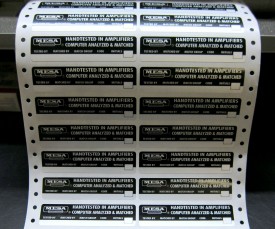
Heater current (both surge and stable), Warm up time, Plate Current at idle, with signal, and AFTER being driven into massive clip, Screen current, Grid current (actually predicts tube life) and short-circuits… then the computer switches off and a technician listens to each tube for noise, banging it repeatedly with a wooden hammer to test for microphonics and reliability under shock and vibration.
We’ve been working with the tube factories for almost forty years because we want the very best. We recommend you use MESA tubes when it’s time to replace. Best tubes, best warranty and the best customer service. Why not? …We’re here for you!
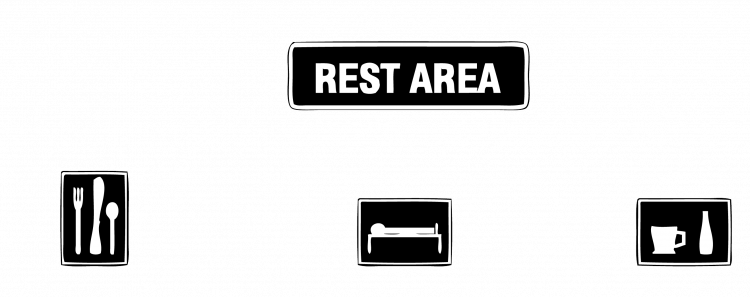
MORE IMFORMATION (you asked for it!)
I tried to keep that last bit short but now I’m told there are players asking if our different color codes might provide different tonal qualities. This probably arises from the Groove Tubes long-standing promotion that their numbered categories WILL affect power and tone. But before I explain, let me answer the question, “No, any difference between our colors would be hard to notice and not significant.”
Earlier I noted that we reject all tubes that test outside the parameters we consider to be the “sweet spot” of performance. We simply don’t buy them and they become part of the raw material brought in by “the other guys”. (It’s been this way going all the way back to our collaboration with Sylvania in the 1980s to produce the iconic STR 415 that’s still the model for today’s best 6L6s.)
We build amps; Groove Tubes sells tubes and long ago needed a way to market ALL their inventory and came up with their number/performance system to do so. It’s valid in that there WILL be noticeable sonic and power differences, especially at their performance extremes.
The approach for the GT range is that weak tubes (the lower number categories) WILL reduce power and soften the sound, while the highest numbers do just the opposite, giving cleaner, louder, harder response. We reject both extremes. In contrast, we pioneered (and patented) multiple wattage and power configurations that are channel-selectable within the amplifier and provide different levels of power along with different sonic characteristics, all carefully designed and consistent. You can choose among single-ended Class A for a sweet low power purr-- up to full-bore Class AB multi-tube lash-ups for maximum damage-inducing output. (Even came up with Simul-Class that combines both Classes A and AB at the same time, as featured in the Mark Five.)
Right here I want to stress one of the most important elements of the MESA approach: CONSISTENCY. It’s one thing to make a golden sounding amplifier. It’s much more difficult to make EVERY amplifier sound magical. And laboring to that end, we’ve made painstaking discoveries that remain closely guarded trade secrets. I know, I know: sounds like BS… but we use our fabled “blindfold tests” to verify that these insights into the magic are scientifically based and fully repeatable-- not just some delusional “Emperor’s New Clothes”-- because they can be very subtle, when taken individually.
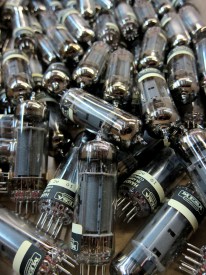
So… Tubes are extremely important to us because anything less than the best will compromise all our other efforts at amp building. We’re not one of the big builders but because we only make tube amps, I’m told we’re the largest user of 6L6 and 12AX7 types and thus we get first-choice to cherry pick the ones we like best. As the “Original Boutique Builder”, we grew up (but didn’t sell out) and we can be pretty demanding!
Another benefit of our approach is that you can replace your old worn out tubes just like changing a light bulb. Just plug in and GO! No bias re-set is needed. But bias controls ARE useful and necessary if you’re trying to accommodate the outside categories in “other” tubes, even if they’re matched.
One thing we don’t do is use obscure NOS tubes in production since you probably wouldn’t be able to replace them later. (However we do offer a few great NOS tubes for the replacement market: Siemans EL-34, Sylvania STR 415 and the fabled Chinese 12AX7 while they last.) And when we settle on a production tube to be used for several years, we’ll often make subtle tweaks to the circuitry to optimize the match up and make sure we’ve got plenty of replacements for years to come.
Once you’re in the family, we’re dedicated to keeping you happy with your amp and your tone! We want your Mesa/Boogie to sound just as good as the day we built it. Now stop reading this and Go PLAY!
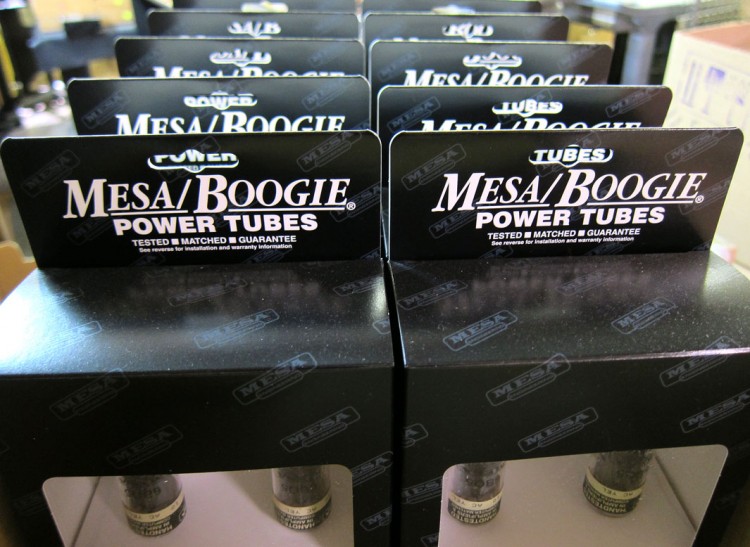
Cheers and Thanks! Randall Smith, Designer & President


